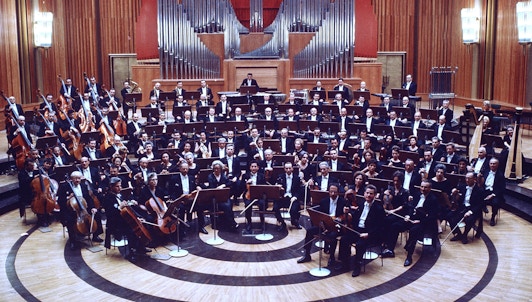Valery Gergiev and the London Symphony Orchestra meet for a Romantic and post-Romantic concert where the symphony is king: experience a stunning performance of two “Seconds”: that of the legendary Johannes Brahms and of Karol Szymanowski, one of the most important Polish musicians in music history aside from Chopin who became known outside of his homeland after the Berlin and Vienna premieres of his Second Symphony, composed in 1910.
Influenced by Scriabin, R. Strauss, and Mahler, Szymanowski’s Second Symphony has an atypical two-movement contrasts with Brahms’s Second, archetype of the great Romantic four-movement symphony. Nonetheless, the later work resembles its earlier cousin in its use of melody in the first movement as the principal means of expression, and in its use of formal figures like the variation and the fugue in the second movement. To quote the composer, “nothing that I have done for a long time pleases me as much as this symphony. I have the feeling that I have discovered within myself some new little boxes with musical values, but not in the least in the sense of ultra-modernism - on the contrary this symphony is a bit of Zopf-Musik" (referring to the highly structured classical music of the 18th century). This melody-filled evening begins with Brahms’s turbulent Tragische Ouvertüre (“Tragic Overture”).

